TALES OF MY FATHER
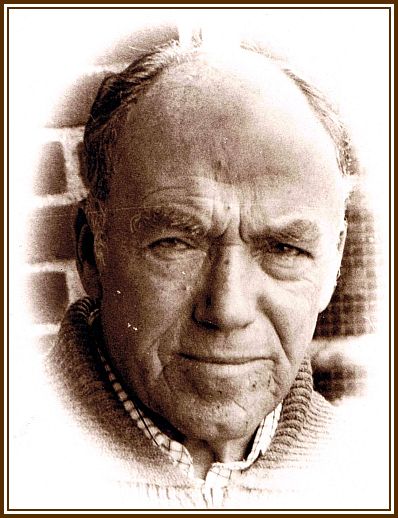 My Father ……. Jack-of-all-Trades, Master-of-None ……. an enigma
My Father ……. Jack-of-all-Trades, Master-of-None ……. an enigma
-oOo-
TALE FIVE: HOW TO MAKE
THE PERFECT CUP OF TEA
-oOo-
PAGE TWO: THE HISTORY OF TEA
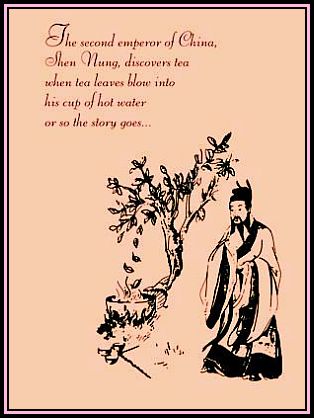
According to an ancient Chinese legend, Tea, as a beverage was discovered quite by chance by the Emperor Shen Nong in 2737 B.C. when a leaf from an overhanging wild tea tree drifted into his pot of boiling water. Apparently he tasted it and enjoyed the flavour. Legend also has it that the poor servant that allowed the leaf to fall into the boiling water was beheaded for allowing it to happen! It is also said that the head of the poor servant was wrapped in tea leaves and buried next to the bush. However, this is but one of many legends to account for the discovery of tea as a beverage.
-oOo-
In India, it is believed that a man named Darma was responsible for first tasting Tea as a beverage. As a young man, he led a life of ill repute, but later turned to religion and became a monk and begged for his livelihood. He traveled to China where he became a Buddhist Missionary. As penance for his riotous youth, he vowed never to sleep. Seemingly, he was able to do this for only a few years before succumbing to sleep. As a result of his regret for breaking his vow, he ripped off his eyelids and discarded them. Years later, he returned to the place where his eyelids had fallen and discovered a bush had grown there. Legend has it that he took some leaves from the bush and steeped them in hot water. Once he tasted the drink, he gained enlightenment and lost his weariness together with a rising of spirits. Since this time, the monks drink tea during long hours of meditation and the Tea is known as The Beverage of Darma’s Eyes.

-oOo-
The British began to import tea in large quantities by 1678. This prompted the Royal family to charter The East India Company (founded by Sir John Watts (deceased 1616) and George White (1648-~1707), which was also known as The Honourable East India Company and The British East India Company), to grant it a monopoly on all trade throughout Asia and Eastern Africa. The Company quickly gained power and went on to become the most powerful monopoly known with Tea as its major commodity. Such was the power of The Company that it had the right to produce coinage, maintain armies, punish lawbreakers, acquire land and set up alliances with foreign powers. At the height of its activity, The Company accounted for half of the world’s trade and dealt mainly in basic commodities, such as Cotton, Silk, Indigo Dye, Salt, Saltpetre, Opium and Tea. In addition, The Company ruled areas of land that were to be the beginnings of the British Empire in India.
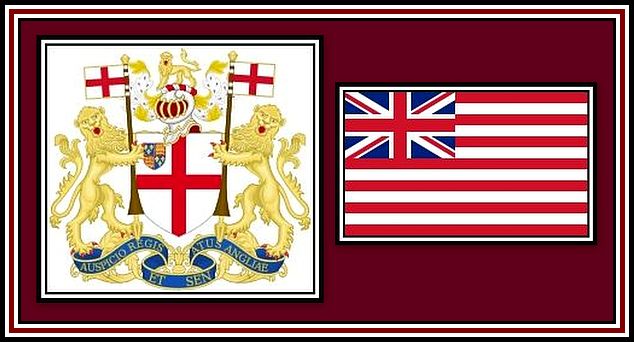 The Coat of Arms (1698) & The Flag (1801) of The East India Company
The Coat of Arms (1698) & The Flag (1801) of The East India Company
-oOo-
As the demand for Tea grew in Britain, The Company’s exports from China were unable to keep pace with the demand. Apparently the Chinese wanted silver for their Tea and The Company found it difficult to obtain sufficient quantities to exchange for the amount of Tea that was required. This prompted The Company find other ways to obtain sufficient silver and this led to the growing of Opium in India, which The Company then exported illegally to China in exchange for silver. The illegally obtained silver which was then traded legally to China for Tea. By 1830, there were a huge number of Opium addicts in China much to the chagrin of Chinese officials. Having evidently had enough of the illegal trading, the officials seized a large amount of Opium and had it dumped into the sea in protest.
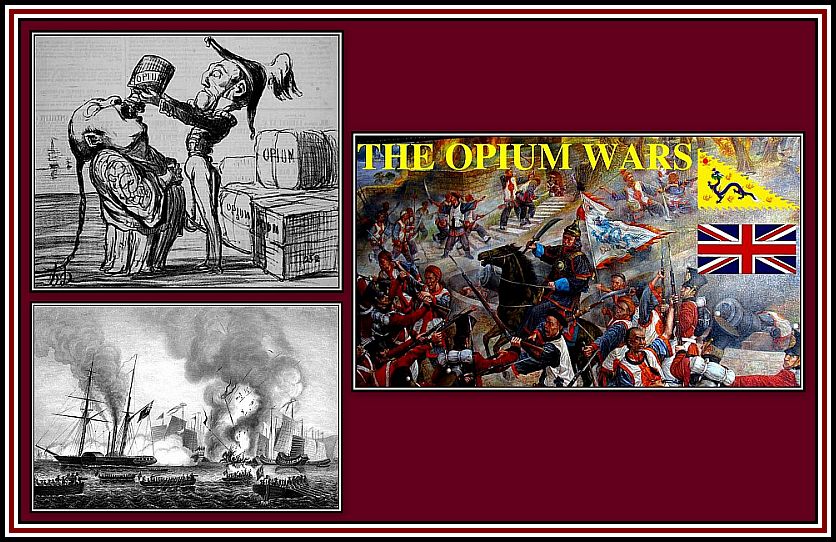
This act resulted in Britain declaring war on China and the Chinese placing an embargo on all Tea exports. The ensuring hostilities are collectively referred to as The Opium Wars (1839-1860) – First Opium War (1839-1842); Second Opium War (1856-1860) – which resulted in forcing China to trade with the other parts of the world.
Click here to watch a video of The History of The Opium Wars
-oOo-
The economic power of The East India Company continued until 1833 when Parliament declared the trade routes between Britain and the Far East to be open to competition. As a result of continued financial problems, The East India Company was dissolved in 1874 with most of its activities being nationalised earlier by 1858.
The Company changed the world and helped bring about the rudiments of today’s global economy.
-oOo-
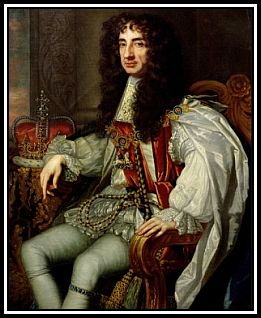 Charles II (1630-1685)
Charles II (1630-1685)
Upon the restoration of the monarchy in 1660, Charles II was presented with some Green Tea brought from Portugal by The East India Company. The King had married Catherine of Braganza (1638-1705) in 1662 who was a Portuguese noblewoman and a great lover of tea as a beverage, which had already become popular in the Europe Courts. After her marriage, she introduced the drink to Court.
-oOo-
Tea was also drunk in the Thirteen Colonies of The Americas (1607-1776). However as a result of the Tea Act of 1773, the British Government levied a Tax on Tea imports to The Colonies. The object of the Tax was to help reduce the volume of Tea held by The British East India Company, which was struggling financially at the time. The main aim of the Tax was to convince The Colonists to purchase The Company’s Tea and thereby have them agree to accept Parliament’s right to tax them.
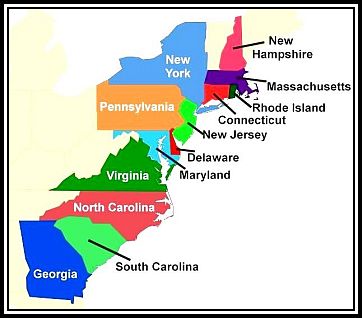 The Thirteen Colonies
The Thirteen Colonies
The Colonies were administered by the Government in London by a policy (i.e.Mercantilism), which was purely for the economic benefit of Britain. The Colonies began to resent and resist a policy where laws were passed in a Parliament where they had no representation. The led the cry of no taxation without representation, which was often heard throughout the 1750s and 1760s. The Colonists felt that such treated violated their traditional rights as Englishmen. This belief brought a sense of unity between each of The Colonies and would later result in open hostilities.
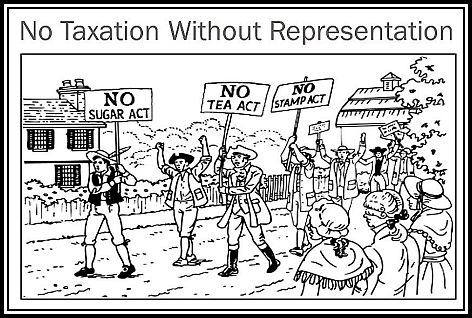
Eventually the Tax rose to such an amount that a number of American ports refused to pay it. On the 16th December, 1773, a group of protesters, known as The Sons of Liberty, boarded the ships of The East India Company in Boston Harbour and hurled the Tea into the water in defiance of the tax. This act, known as The Boston Tea Party, together with a number of other acts, led to The Revolutionary War (1775-1783).
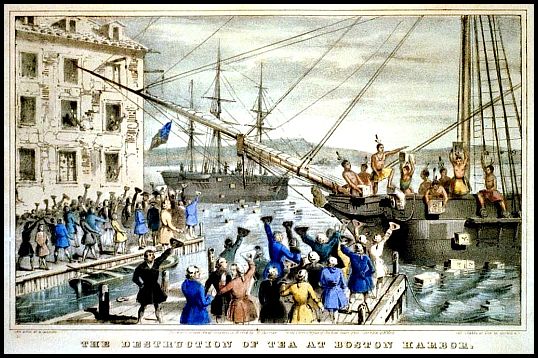 Lithograph of The Destruction of Tea at Boston Harbour (1846) by Nathaniel Currier (1813-1888)
Lithograph of The Destruction of Tea at Boston Harbour (1846) by Nathaniel Currier (1813-1888)
-oOo-
Click here to watch a short video on The history of Tea
-oOo-
At first the drinking of Tea was limited to members of Royal Courts and to the wealthy members of society. At the time of its introduction into Britain, one pound of Tea cost more that the amount a farm worker was able to earn in one month. Over the years, the cost of Tea was reduced and Tea began to be grown in large quantities in India and other parts of the world and exported to Britain to quench the national thirst.
Today, many of the large Tea Companies that were formed are no longer in the hands of British entrepreneurs and have been sold to those in India, where today, the majority of the world’s Tea is now grown.
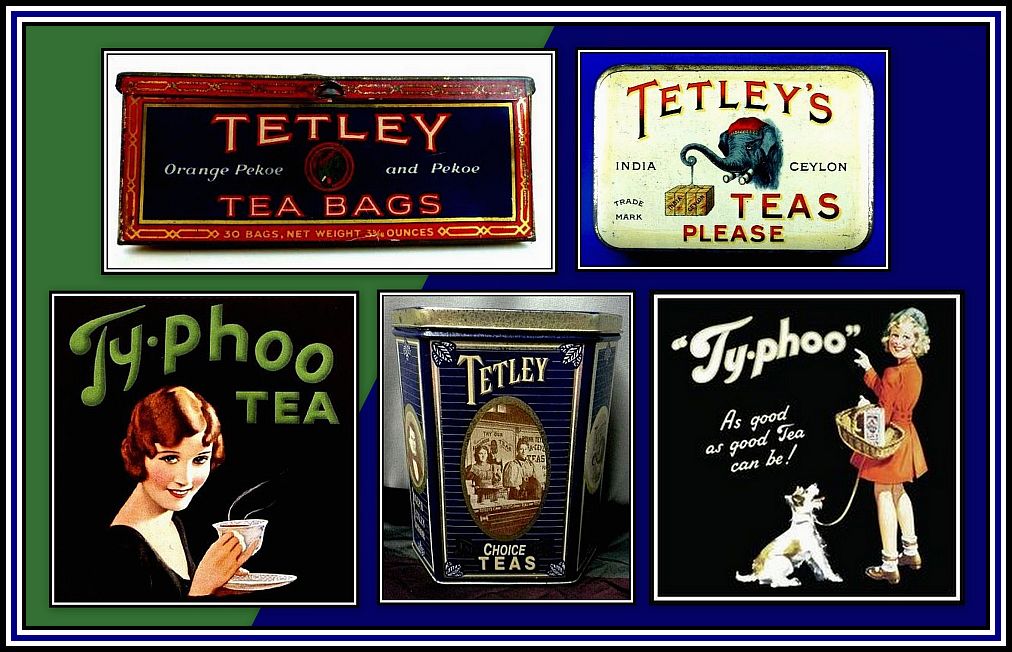 The Typhoo Tea Company (founded in 1903) and The Tetley Tea Company (founded in 1834)
The Typhoo Tea Company (founded in 1903) and The Tetley Tea Company (founded in 1834)
are both now operated by large Indian Companies
—ooOoo—
